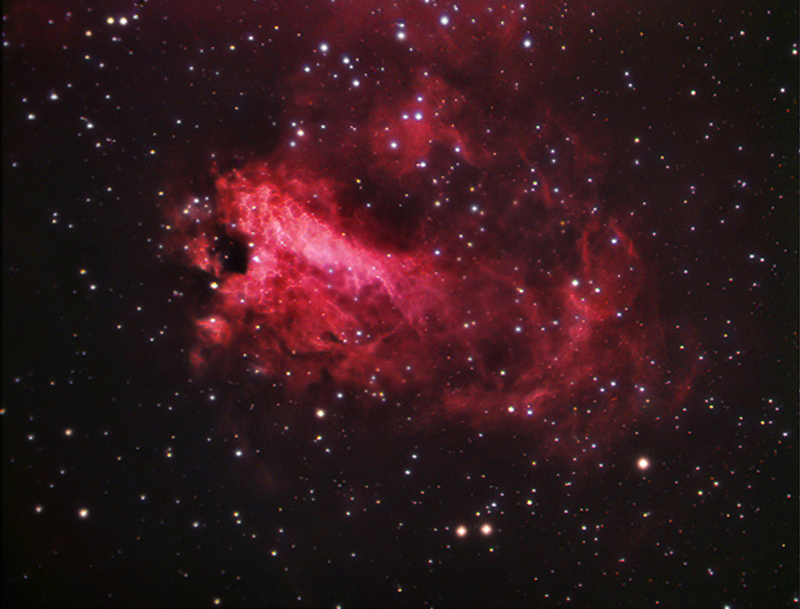
M 17 – SWAN NEBULA
Sagittarius
(ra: 18:20,8/ dec -16:11)

DATA
TYPE: Emisión and Reflection Nebula
VISUAL MAGNITUDE: 6
SIZE: 16 x 13 arc minutes
DISTANCE 6,000 light years
OBJECT DESCRIPTION
M17 also called the Omega Nebula, because of its shape compared with the Greek letter. It can be found quite easily by locating the giant star Gamma Scuti of Magnitude 4.7. M17 is just at 2 degrees south west. The Swan Nebula is a star forming region and as difference with M16 the stars are covered by the nebula. The real colour of the cloud is reddish with some pink colouration. This colour comes from the hot hydrogen gas which is exited to shine by the hottest stars within the nebula. M17 also contains significant dark dust material particularly in the internal arc (neck of the swan) visible in the photograph.
It was discovered by Philip Loys de Chéseaux a Swiss Astronomer and Mathematician. Charles Messier independently discovered and catalogued in June 1764
IMAGE INFORMATION
SCOPE: Celestron C8 (SCT) Vixen GPDX Mount. Sky Sensor 2000
SKY CONDITIONS: Foggy - VISUAL MAGNITUDE 3.5 /
CAMERA: SXV M7 – @f 4 - Meade Focal Reducer 3.3
FILTERS: Astronomik Ha (6nm), LRGB Type 2 / Atik Filter Wheel
EXPOSSURES: LHaRGB (20,40,20,20,20)
GUIDED: Synta 70/400 Refractor, with SXV GuideHead and Astro Art CCD Control Intefase 3.72
PROCESSED: calibration in ImagesPlus: darks, flats, bias / Photoshop CS